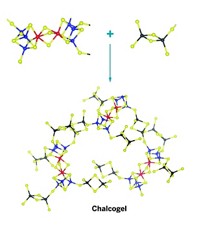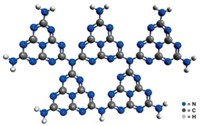Advertisement
Grab your lab coat. Let's get started
Welcome!
Welcome!
Create an account below to get 6 C&EN articles per month, receive newsletters and more - all free.
It seems this is your first time logging in online. Please enter the following information to continue.
As an ACS member you automatically get access to this site. All we need is few more details to create your reading experience.
Not you? Sign in with a different account.
Not you? Sign in with a different account.
ERROR 1
ERROR 1
ERROR 2
ERROR 2
ERROR 2
ERROR 2
ERROR 2
Password and Confirm password must match.
If you have an ACS member number, please enter it here so we can link this account to your membership. (optional)
ERROR 2
ACS values your privacy. By submitting your information, you are gaining access to C&EN and subscribing to our weekly newsletter. We use the information you provide to make your reading experience better, and we will never sell your data to third party members.
Analytical Chemistry
Turning Water Into Fuel
Silicide compound and sunlight convert water to H2 and O2
by Mitch Jacoby
October 4, 2007

In a two-for-one deal that may give the solar energy field a shot in the arm, researchers have discovered a semiconducting silicide that functions effectively as a water-splitting photocatalyst and doubles as a gas separator (Angew. Chem. Int. Ed., DOI: 10.1002/anie.200701626).
Using sunlight to liberate hydrogen from water is an appealing way to generate a clean-burning fuel from a renewable energy source. As a result, scientists have examined a variety of materials over the years in search of a suitable catalyst to accelerate the water-splitting reaction. Several candidates show some level of promise, yet each material suffers from shortcomings that would limit its applications. For example, some catalysts absorb solar radiation inefficiently, exhibit low activity, or are unstable or costly.
Now, a team of researchers at the Max Planck Institutes for Bioinorganic Chemistry and for Coal Research, in Germany, report that titanium disilicide (TiSi2)—an abundant and inexpensive semiconductor not known previously to be a water-splitting catalyst—separates water into hydrogen and oxygen when reactors containing the powdered catalyst are illuminated with simulated sunlight.
"Titanium disilicide has very unusual optoelectronic properties that are ideal for use in solar technology," says research group leader Martin Demuth. Specifically, the material absorbs light over a wide range of the solar spectrum and exhibits a bandgap???an important determinant of semiconductor properties???that varies by nearly 2 eV across that range. Semiconductors typically exhibit a much narrower variation in bandgap.
Another key observation reported by the team, which includes Demuth, Peter Ritterskamp, Andriy Kuklya, and their coworkers, is that hydrogen evolves readily during experiments, but oxygen adsorbs reversibly on the catalyst surface. Raising the temperature above 100 °C rapidly releases the stored oxygen, they say, which provides a convenient way to separate the gases.
On the basis of control experiments, isotope-labeling tests, and other measurements, the researchers propose that exposing commercial TiSi2 to light in the presence of a small amount of oxygen (as found in water that has not been degassed) leads to formation of catalytically active sites. These nanometer-sized domains of oxidized species catalyze the water-splitting and gas-forming reactions, they say.
As news of the findings begins to spread, some scientists are puzzling over the unusual properties reported for TiSi2. At the National Renewable Energy Laboratory, for example, senior research fellow Arthur J. Nozik notes that the "curiously" varying bandgap implies that the material is neither pure nor homogeneous. It is unclear, he says, whether this range represents individual particles with distinct chemical composition or a graded composition for individual particles, which suggests that the mechanism is not well-understood.
Demuth agrees that the behavior is "atypical" but adds that he has founded a start-up company to further study, develop, and possibly commercialize the technology.




Join the conversation
Contact the reporter
Submit a Letter to the Editor for publication
Engage with us on Twitter